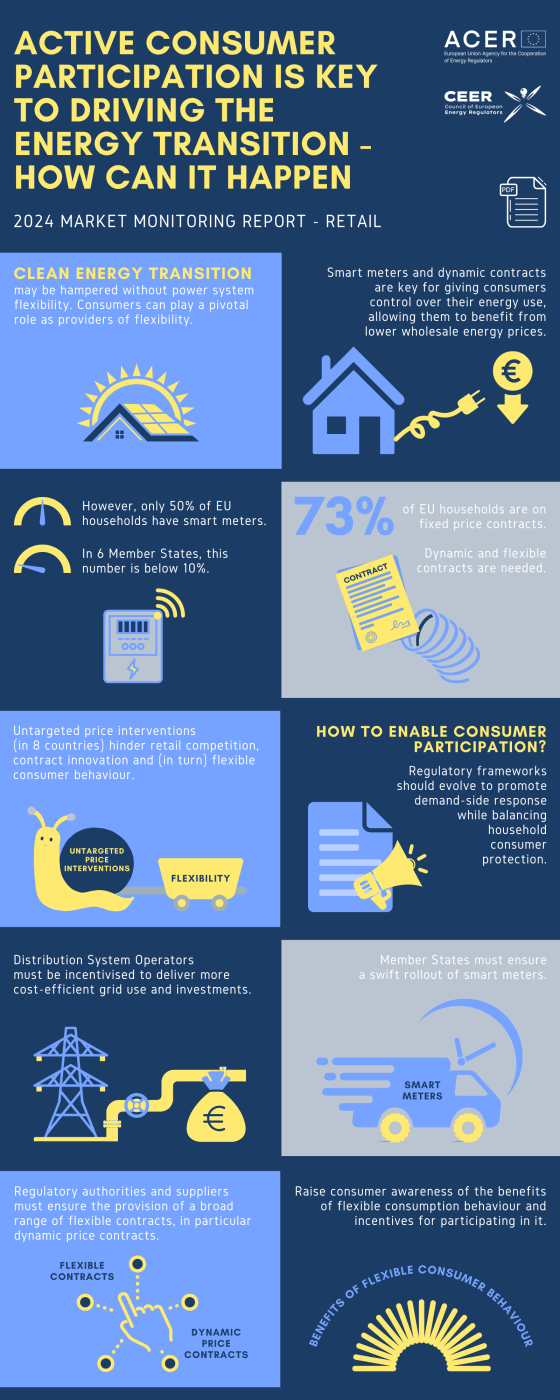Active consumer participation is key to driving the energy transition – how can it happen?

Active consumer participation is key to driving the energy transition – how can it happen?
What is it about?

The EU’s drive towards carbon neutrality by 2050 requires swift changes. Today’s ACER-CEER 2024 Market Monitoring Report on energy retail and consumer protection emphasises that the clean energy transition will not occur without power system flexibility and the active participation of energy consumers.
Which key challenges did the report identify?
- Slow smart meter adoption
- Increased price volatility
- Fixed contracts dominate
- Member States price interventions hinder flexibility
What are the key recommendations of the energy regulators’ report?
Retail markets can play a pivotal role as providers of flexibility. Unlocking more flexible retail consumption is crucial for the energy transition's success. It also creates opportunities for consumers to benefit from lower energy prices.
The report calls on regulatory authorities and Member States to prioritise demand-side response frameworks, incentivise efficient grid use, and accelerate the rollout of smart meters. Dynamic pricing and flexible contracts are key to empowering consumers.
To unlock greater flexibility in retail energy markets, the report calls for:
- The regulatory framework to be updated to promote demand-side response while balancing household consumer protection.
- Incentives to optimise efficient grid usage.
- Faster smart meter rollout.
- Empowering consumers through more flexible contract options. Additionally, raising consumer awareness and providing incentives for flexible energy consumption are key to driving the energy transition.
ACER's monitoring shows a gradual decrease in EU household energy prices
Average EU energy prices stabilised in 2024 after a major decrease the previous year, although they remain higher than pre-crisis levels. Retail price variations depend on contract types. Member States with more fixed-rate contracts saw slower reductions, leading to higher consumer costs compared to those with dynamic contracts.
To help track these trends, ACER has released a dashboard that shows the monthly changes in electricity and gas prices, including components like energy, network charges, and taxes across Member States from January 2019 to August 2024.
Get involved!
ACER and CEER will hold a webinar to present the report’s main findings and recommendations (Monday, 7 October 2024 at 14:00 CET). Register (for free) here.


